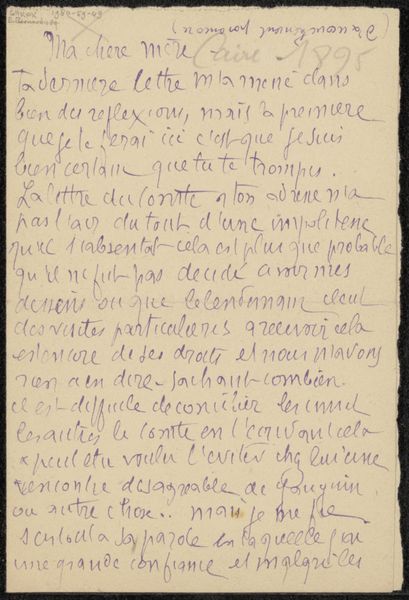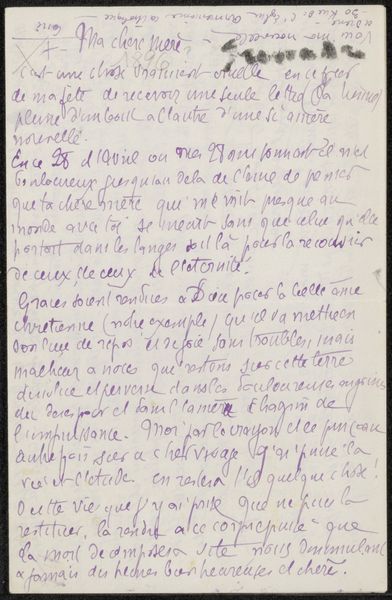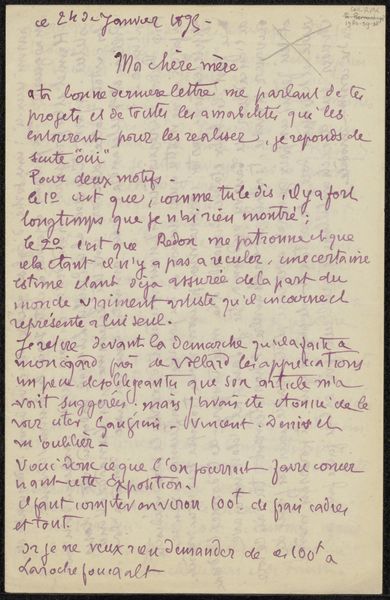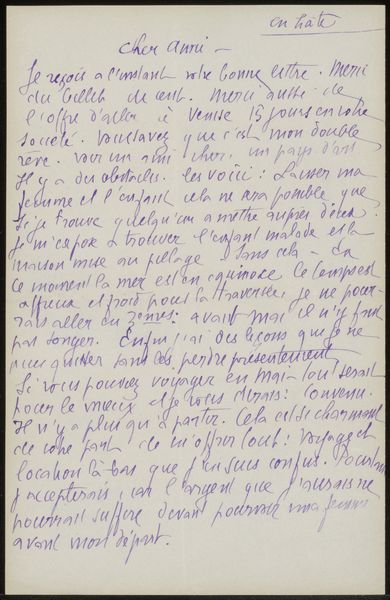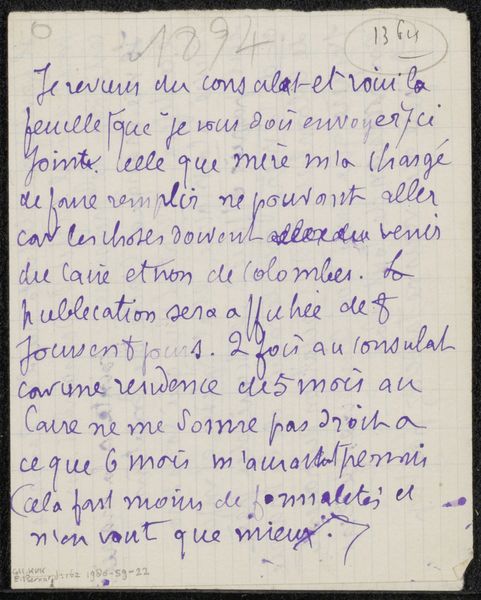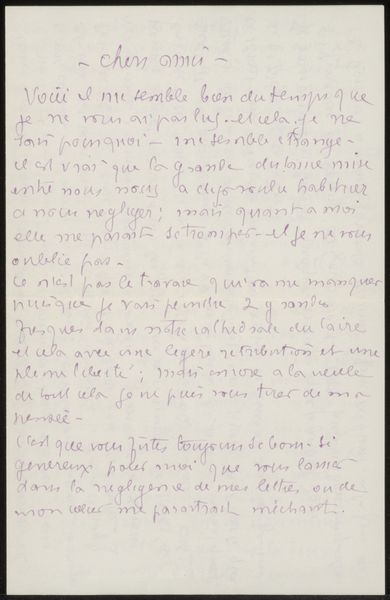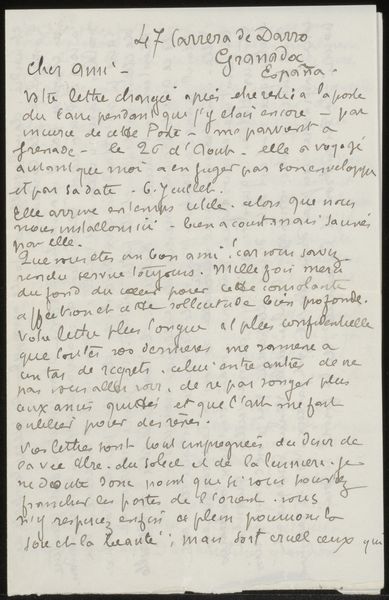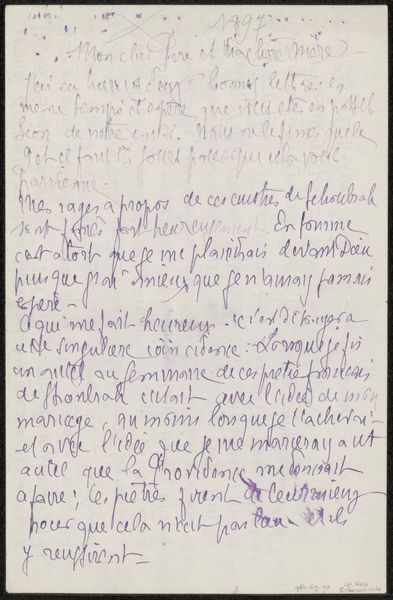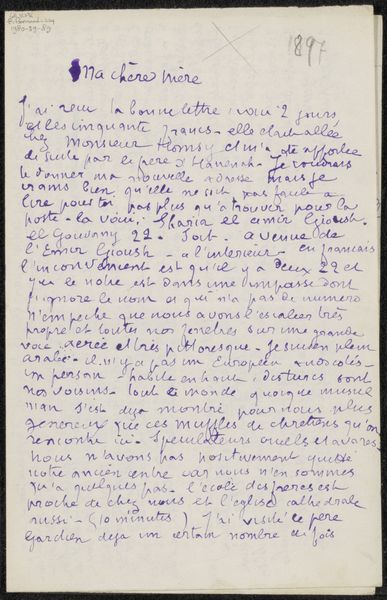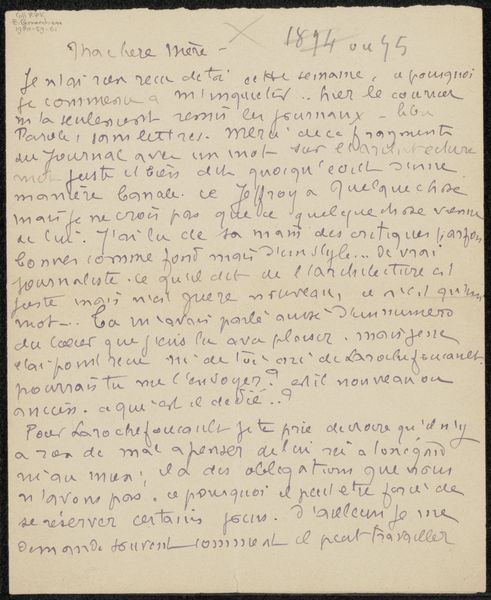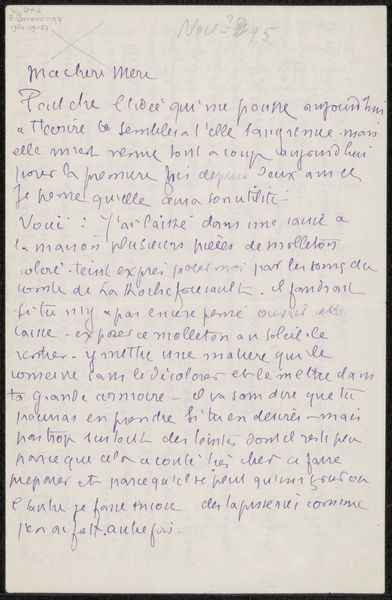
drawing, paper, ink, pen
#
portrait
#
drawing
#
brush pen line
#
script typography
#
self-portrait
#
hand-lettering
#
hand drawn type
#
hand lettering
#
paper
#
ink
#
intimism
#
pen
#
post-impressionism
#
calligraphy
Copyright: Rijks Museum: Open Domain
Editor: Here we have "Brief aan Andries Bonger," a letter by Emile Bernard, likely made before 1906. It appears to be ink on paper, with the artist’s handwriting filling the page. The mood feels intimate and personal. How do you interpret this work, considering its form as a handwritten letter? Curator: It's important to recognize this isn't just any letter; it's a glimpse into the Post-Impressionist art world and Bernard’s relationships. The act of writing itself was a performance of identity, a conscious shaping of the self for the recipient. What does the handwritten aspect suggest about the power dynamics and social bonds between artists and their patrons during that era? Editor: It makes me think about the accessibility of art and communication. Handwriting creates an immediate connection to Bernard's thoughts and feelings. Curator: Exactly. Think about the historical context: the rise of print culture versus the enduring power of the personal touch. A handwritten letter underscores the intimacy between artist and recipient. We have to consider how class and social capital might influence those exchanges. Do you think there's an element of performance, perhaps even vulnerability, embedded in choosing this particular medium? Editor: Definitely. Choosing to communicate through a letter signals intention. Maybe he's consciously crafting a persona or a message for posterity, not just for Andries Bonger. Curator: Precisely. Understanding Bernard's motivations, considering the societal implications of art patronage and written communication, helps us contextualize "Brief aan Andries Bonger" within broader narratives of artistic identity and cultural exchange. Editor: That's given me a lot to consider; I see now that a "simple" letter has deep implications. Curator: Indeed. Art often functions as a mirror reflecting power dynamics and social landscapes, rewarding a deep exploration.
Comments
No comments
Be the first to comment and join the conversation on the ultimate creative platform.
